Decoding the diversity of daffs
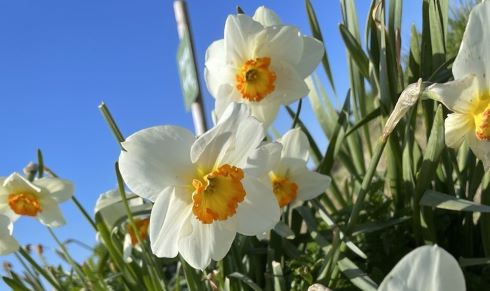
16th April 2024
School students in the UK are helping to untangle the genetic complexity behind thousands of different varieties of daffodil
At this time of year, you can’t help but notice the daffodils – with their iconic yellow trumpets sitting proud in the centre of six yellow petals (or the tepals of the perianth to be precise) all over the UK’s parks, meadows and verges. Except that this description only really describes a handful of the immense variations of daffodils, or Narcissi, out there.
It is simply astonishing just how much variation has arisen from a relatively small gene pool of between 30 and 80 species, mostly at the hands of horticulturists and selective breeding. There are thought to be well over 30,000 recognised Narcissi cultivars, each with some individual trait that separates them from another, whether that is the colour of their perianth, the shape and size of the corona, or even when they flower. Yet we are only scratching the surface of our understanding of diversity within the genus.
A new citizen science project, the Daffodil DNA Project, is helping to understand and hopefully preserve this beautiful diversity while also teaching children hands-on plant science and DNA sequencing.
A world of daffodils
Daffodils (Narcissi) are native to meadows and woods across southern Europe and North Africa, with a centre of diversity in the Western Mediterranean, particularly the Iberian peninsula. Both wild and cultivated plants having since naturalised widely and were introduce to the Far East in ancient times, at least prior to the tenth century. Narcissi tend to be long-lived bulbs, which propagate by division, but are also insect-pollinated. Known pests, diseases and disorders include viruses, fungi, the larvae of flies, mites and nematodes. Some Narcissus species have become extinct, while others are threatened by increasing urbanisation and tourism¹.
The classification of Narcissus has been a notable challenge for botanists over the years, with many attempts to find a unifying classification resulting in disagreement. Those that take a precise definition of species, informally identified as ‘splitters’, tend to give greater weight to minor variations in difference than those who take a more gestalt view, with a tendency to ‘lump’ their species as reflection of the perception of a continuous range of variation within a species assignation.
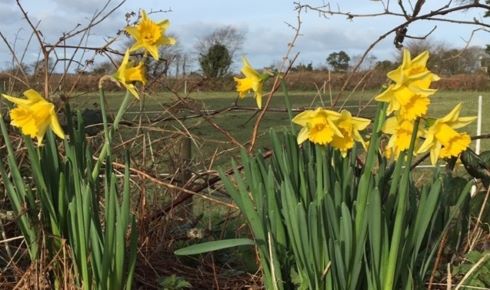 There are thought to be well over 30,000 recognised Narcissi cultivars
There are thought to be well over 30,000 recognised Narcissi cultivarsThe result of such divergence is a body of published work that ascribes somewhere between 30 and 80 species depending upon the authority. The Royal Botanic Garden Kew currently accepts 73 species, suggesting a native range from Macaronesia to Afghanistan, South East China to Japan²). Advances in using molecular analyses have made some way in trying to resolve the rather messy lineages that were based upon geographical, ecological and breeding observations³,⁴.
In the wild, the divergence can be partially explained by considering the sheer breadth of the ecosystems they span. Figure 1 shows the centre of diversity located in the Mediterranean basin, with introductions further afield⁵. Selective breeding has given rise to a further plethora of potential characteristics, such as reflexed tepals that look like they are being pulled back away from the corona, tepals that look like propeller blades and even fused perianth that are affectionately called hooped-petticoat daffodils. The coronas themselves show phenomenal variation away from classic trumpets to the small cups and split coronas of a butterfly daffodil. It can even appear that the corona has been “lost” in the case of double daffodils, where the flower head appears full of extra tepals. Growers have also sought to play with the colours selecting greens, peaches, oranges and whites often in combination.
To help make sense of the variation, the Royal Horticultural Society assigned all daffodils to twelve main divisions based upon simple characteristics such as the trumpet length whilst keeping the colour code system devised by American Dr Tom Throckmorton of the American Daffodil Society⁶. Within these divisions, the daffodils are given “pseudo-botanic” names such as Coverack Beauty. This does lead to problems as classification is very much in the eye of the beholder when it comes to dealing with plastic traits, and it can be incredibly challenging to determine if two cultivars are the same or different.
From a plant heritage conservation perspective, there is then the question of whether stocks could be interbred or should remain isolated, and similarly whether breeding records are accurate. There is a long list of daffodil cultivars that enthusiasts and professional growers alike would like to verify.
Plants have always been selected and bred, whether for their beauty, flavour, scent or other reasons. This breeding involves an enormity of human effort and inventiveness that is wasted if the plants cease to be grown. Climate change, the advance of new pests and diseases, loss of gardens, a diminishing nursery trade and lack of knowledge in the general population all conspire to reduce the diversity of our garden flora. If garden plants go, a tantalising slice of social, cultural and horticultural history dies with them.
This is where the Daffodil DNA Project comes in.
Decoding the daffs
The Daffodil DNA Project has developed from a project that started in Beaulieu Convent School in Jersey⁷ to bring schools from across the UK together with scientists to explore chloroplast genomes within these heritage cultivars.
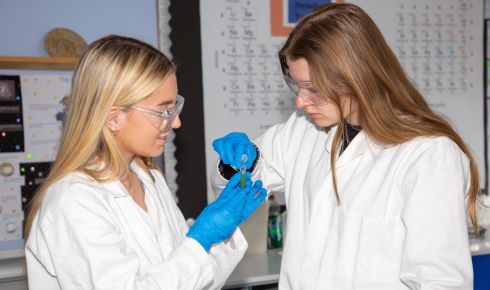 In the Daffodil DNA Project, students take daffodil leaves from 'daffodils of interest' and isolate as many chloroplasts as possible
In the Daffodil DNA Project, students take daffodil leaves from 'daffodils of interest' and isolate as many chloroplasts as possibleSchool children aged between 14-18 are using nanopore sequencing technology and discovering the variation within the chloroplast genomes, with each school funded by a Royal Society Partnership Grant⁸.
Students take daffodil leaves from “daffodils of interest” and isolate as many chloroplasts as possible before extracting the DNA from them and sequencing it using MinION portable nanopore sequencing devices. The use of chloroplast DNA, rather than nuclear, is necessary due to the constraints of school budgets and computational power available. Despite just how closely related these cultivars are to each other, we still see variation within the sequences which can then be used to analyse phylogeny.
The Daffodil DNA Project began by partnering with two of the UK’s five Plant Heritage National Collections of daffodil cultivars in the UK. Brodie Castle is the former home to the prodigious breeder of daffodil cultivars Major Ian Brodie, who was known to have maintained a very detailed ‘log book’ of putative parents that is still held at the property⁹. This collection has formal links with a national collection of vintage cultivars that have been maintained and verified by a specialist nursery, Croft 16, located in the far west of Scotland and managed by Duncan and Kate Donald. The Donalds are well known and respected in the daffodil world for their National Plant Collection of pre-1930 daffodils and for their heritage work on the bulbs including a book on Ian Brodie’s legacy¹⁰.
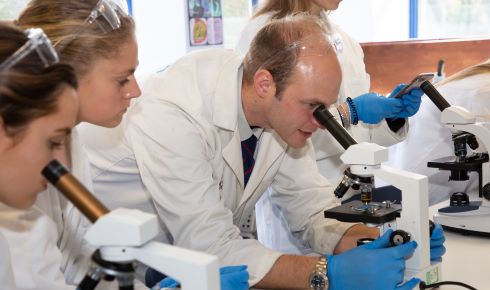 Much of the data produced by schools can be further polished by experienced researchers
Much of the data produced by schools can be further polished by experienced researchersThe aspiration for each school is to assemble a complete chloroplast genome for each of the cultivars in these collections. Students have been able to obtain plenty of data so far, but there are some tricky regions. Even so, much of the data produced by schools can be further polished by experienced researchers, leading to great results. Students are now contributing sequences to the European Nucleotide Archive and hopefully some will even get their names published in some specialist journals as co-authors.
With thousands of daffodil cultivars yet to be sequenced, the students (and their teachers and contributing scientists) feel an authentic sense of contributing to science. Hopefully this will inspire future plant scientists, helping maintain our supply of scientists in the UK R&D pipeline, and maybe even raise the profile of plant science. The project itself may not only help conserve the plants that the National Collection Holders currently cultivate, but it might just help them better understand the origin of the material culture they are conserving, for future generations to enjoy.
Find out more about The Daffodil DNA Project
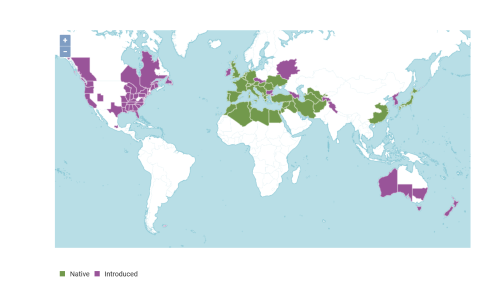 Figure 1: Distribution map of native Narcissus (green). Purple shows introduced Narcissus species which also can lead to hybridization between unrelated species. Adapted from Kew Plants of the World Online (2022).
Figure 1: Distribution map of native Narcissus (green). Purple shows introduced Narcissus species which also can lead to hybridization between unrelated species. Adapted from Kew Plants of the World Online (2022).1. Mathew, B. (2002) Classification of the genus Narcissus in Hanks, G.R. (Ed.) Narcissus and Daffodil: The genus Narcissus. Taylor & Francis. London
2. Kew (2022) Plants of the world online: Narcissus. [Online]: https://powo.science.kew.org/taxon/urn:lsid:ipni.org:names:1558-1 [Accessed: 21/11/2022]
3. Medrano, M., López-Perea, E., & Herrera, C. M. (2014). Population genetics methods applied to a species delimitation problem: endemic trumpet daffodils (Narcissus section Pseudonarcissi) from the Southern Iberian Peninsula. International Journal of Plant Sciences, 175(5), pp. 501-517.
4. Mohammed, I., Rehman, S. I, Mir, A. A., Siddique, M. Dar, M. S., Shah, M. D., Masoodi, N. H. & Padder, B. A. (2020). Population Genetics of Narcissus Species Reveals High Diversity and Multiple Introductions into Kashmir. Agric Res 9, pp.536–542
5. Marques I, Aguilar JF, Martins-Louçao MA, Moharrek F, Feliner GN. 2017. A three-genome five-gene comprehensive phylogeny of the bulbous genus Narcissus (Amaryllidaceae) challenges current classifications and reveals multiple hybridization events. Taxon 66: pp. 832–854.
6. RHS (2012) Horticultural classification: Daffodils. [Online]: https://www.rhs.org.uk/plants/pdfs/plant-registration-forms/daffhortclass.pdf [Accessed: 21/11/2022]
7. Hale, J.M. (2020) Engaging the next generation of plant geneticists through sustained research: an overview of a post-16 project. Heredity 125, 431–436.
8. Royal Society (2020) Collaborative projects [Online]: https://royalsociety.org/grants-schemes-awards/grants/partnership-grants/case-studies/collaborative-projects/ [Accessed: 18/02/2024]
9. NTS (2021) Brodie’s blooming marvellous springtime display [Online]: https://www.nts.org.uk/stories/brodies-blooming-marvellous-springtime-display [Accessed: 22/11/2022]
10. Donald, D. (2020) Ian Brodie’s career as a daffodil cultivator. National Trust for Scotland. Edinburgh
Kevin Frediani is Curator of the Botanic Garden and Grounds at the University of Dundee.
Jon Hale MRSB is assistant head of biology at Beaulieu Convent School, St Helier, and a finalist of the 2022 RSB School Biology Teacher of the Year Award.
This project would not have been possible without the dedication of the teachers and students from Baldragon Academy, Banchory Academy, Beaulieu Convent School, Berkshire College of Agriculture, Forfar Academy, Morgan Academy, Queen Anne High School, St Modan's High School, St Peter the Apostle High School and St Thomas of Aquin's High School, Edinburgh. Similarly, each and every scientist has helped this young people and their teachers contribute to the body of scientific knowledge, from the James Hutton Institute: Tom Adams, Brian Harrower, Kelly Houston, Malcolm Macaulay, and Brezo Mateos; from the University of Dundee School of Life Sciences: Carmen Escudero-Martinez, Ingo Hein, Edgar Huitema, Trisha McAllister, Kara McHugh, Senga Roberson-Albertyn, and Jessie Shadbolt; from Harper Adams University: Prof Dawn Arnold; and from University of West England: Prof John Hancock. A special thanks must go to James Abbott for his tireless dedication to make the data shine with support from Prof Geoff Barton and Jim Procter; Malcolm Macaulay and Craig Phillips for their support in running the teacher training activities, Jon Pugh from Oxford Nanopore for the support to schools, and Jenna Foster for producing imagery to support the students’ understanding of the science and finally the Executive Group: chaired by Dr Liz Lakin, (University of Dundee, Education), supported by Drs Jorunn Bos & Davide Bulgarelli (STEM liaison), Dr Malcolm Macauley (JHI liaison), Dr Suzanne Duce (bioinformatics and digital resources), Kevin Frediani (horticulture), Olivia Phillips (Royal Society Partnership Grants lead), and Jo Cox (Royal Society Education Manager).


